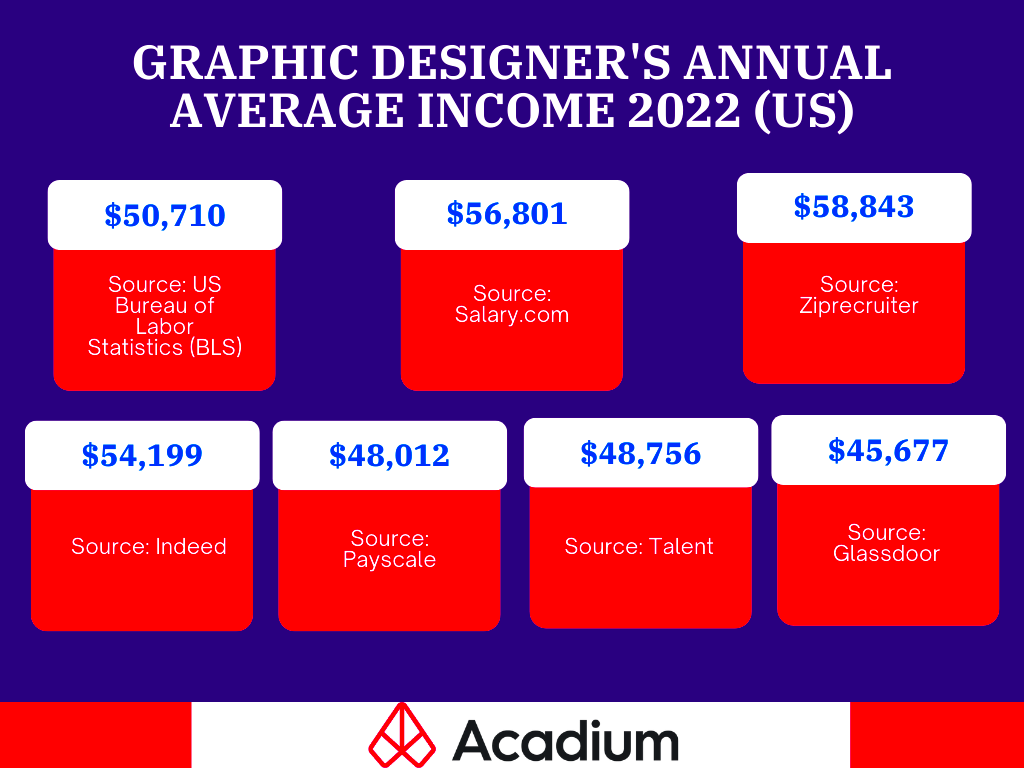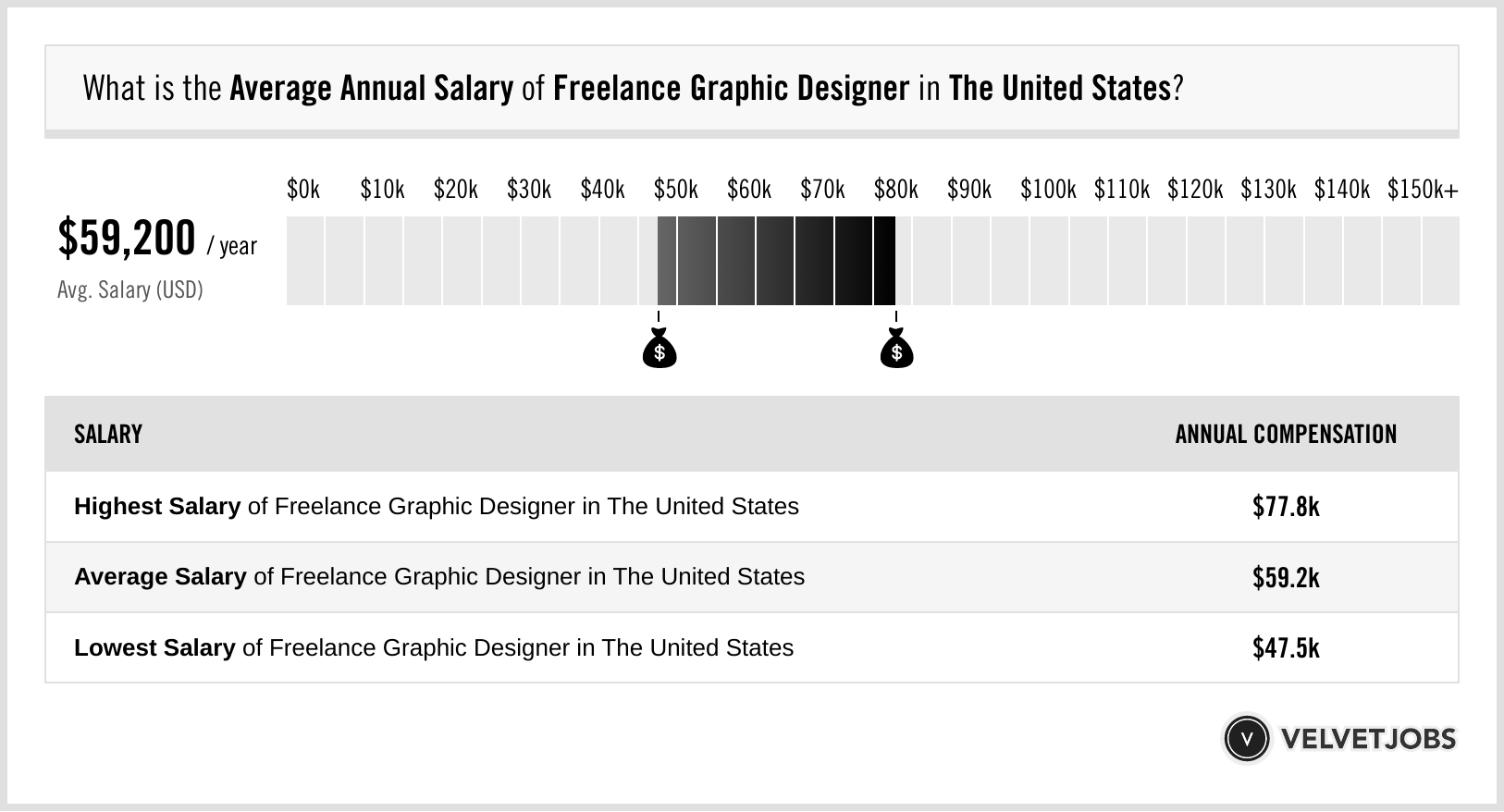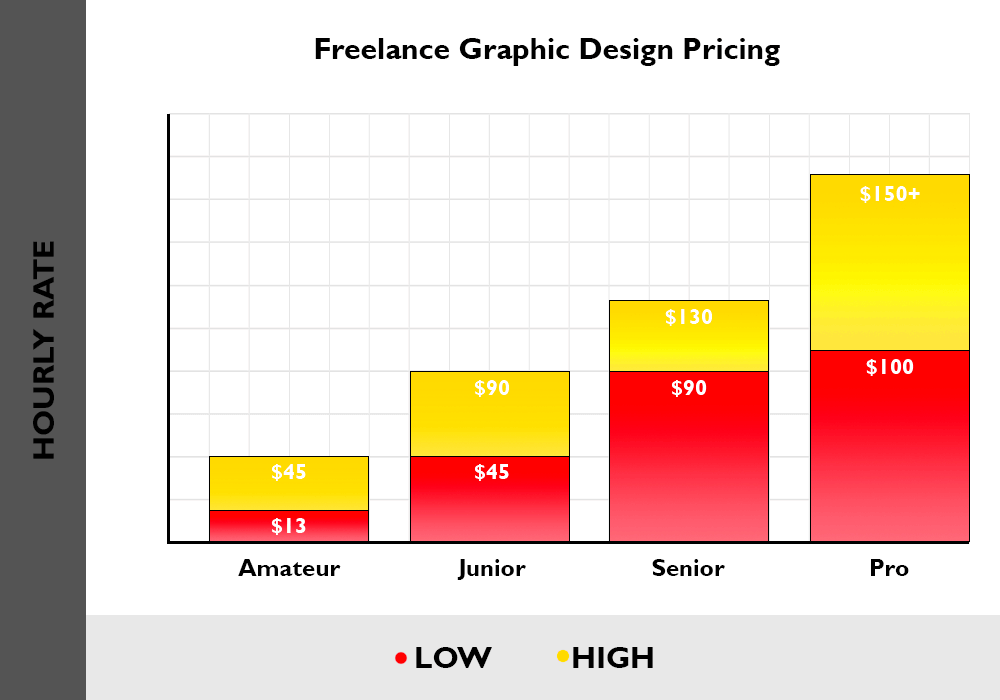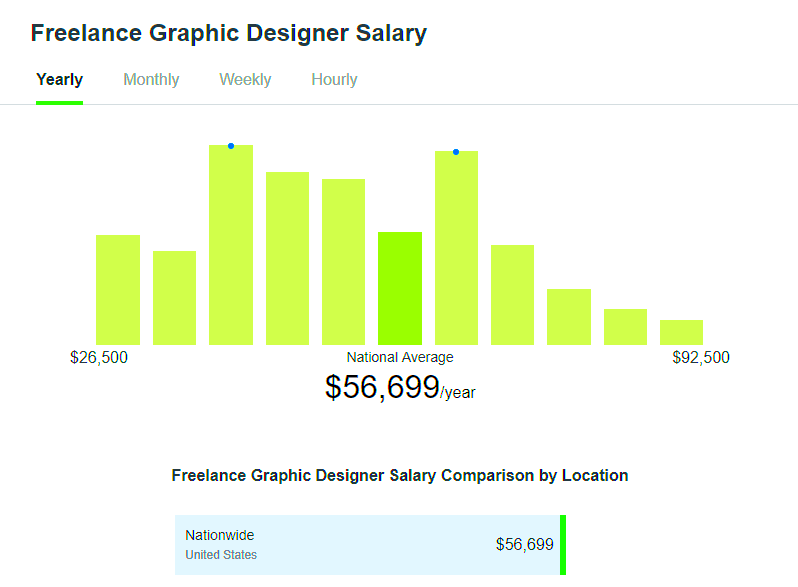The income of freelance graphic designers can vary widely depending on several factors. Unlike traditional salaried positions, freelance work allows designers to set their own rates, but this also means their earnings can fluctuate based on their workload, client base, and market trends. Many freelance graphic designers can earn a stable income, but it often requires careful planning and constant skill improvement to meet client demands and stand out in a competitive market.
Factors That Affect Graphic Designers' Annual Earnings

Several elements can influence how much freelance graphic designers earn each year. Here are some key factors that play a major role:
- Skill Level: Designers with advanced skills or specific expertise in high-demand areas, like UI/UX or motion graphics, can typically command higher rates.
- Experience: Experienced designers are more likely to have a solid portfolio and a strong reputation, helping them attract high-paying clients.
- Client Type: Working with larger companies or established brands often brings higher fees than working with small businesses or startups.
- Project Complexity: More complex projects with detailed requirements often pay more than simple designs.
- Geographic Location: Designers in certain regions may have different pricing standards, and those targeting international clients can adjust their rates accordingly.
- Platform or Marketplace: Some freelance platforms may charge service fees or take a commission, impacting the net earnings of designers.
Also Read This: How to Market Fiverr Gigs: Strategies for Success on BHW
How Experience Impacts Freelance Graphic Designers' Income

Experience can significantly influence a freelance graphic designer's income. Designers who have been in the field longer typically have larger portfolios, better industry connections, and a clearer understanding of client expectations. Here’s how experience levels often affect income:
| Experience Level | Average Annual Earnings |
|---|---|
| Beginner (0-2 years) | $20,000 - $40,000 |
| Intermediate (3-5 years) | $40,000 - $70,000 |
| Experienced (5+ years) | $70,000 and above |
Experienced designers are often able to negotiate higher rates, receive referrals, and secure long-term contracts. Many also expand into consulting or training roles, further increasing their income potential. As experience grows, so does the confidence to charge premium rates that reflect their skill and expertise.
Also Read This: How to Pay on Fiverr: A Step-by-Step Guide
Comparing Earnings Based on Specialization and Skills

The specialization and skill set of a freelance graphic designer can have a huge impact on their earnings. Designers who focus on specific niches often have the ability to charge higher rates due to their specialized knowledge. For example, a designer skilled in web design or branding may earn more than someone who creates general graphic design work. Here's how different specializations can affect income:
- UI/UX Design: With the rise of digital platforms, UI/UX designers are in high demand. This specialization often leads to higher-paying projects, especially in tech and digital product development.
- Branding and Identity: Graphic designers who specialize in branding and logo design are sought after by businesses looking to establish a strong brand identity. These projects often command premium prices.
- Illustration: While more niche, illustrators can earn significant income, particularly if they cater to specific industries like publishing, advertising, or entertainment.
- Motion Graphics: As video content becomes more prominent in marketing, motion graphic designers are in demand, allowing them to charge higher rates for complex animations and videos.
- Print Design: While the demand for print design has decreased in the digital age, there is still a market for designers in this field, particularly in areas like packaging, advertising, and editorial design.
Specializing allows designers to become experts in their field, build a reputation, and target clients who are willing to pay more for their specific expertise.
Also Read This: How to Set Pricing on Fiverr
Platforms and Marketplaces for Higher Earnings

Freelance graphic designers can significantly benefit from using platforms and marketplaces to find clients. These platforms offer a steady stream of job opportunities, though competition can be fierce. The key is to choose the right platform based on the designer’s skill set, experience, and desired clients. Here's a look at popular freelance platforms and how they impact earnings:
- Fiverr: Fiverr is a well-known marketplace that allows graphic designers to set their own prices for various design services. Designers who offer highly specialized services or deliver high-quality work consistently can earn more.
- Upwork: Upwork is a platform that connects freelancers with clients for long-term projects. Designers can earn well on Upwork by building a solid profile, completing larger projects, and securing repeat business.
- 99designs: Focused specifically on design, 99designs offers opportunities for graphic designers to participate in design contests or work directly with clients. Designers here can earn significantly by winning high-profile contests.
- Behance: Behance is not only a portfolio platform but also a place where designers can connect with potential clients. By showcasing high-quality projects, designers can attract high-paying freelance opportunities.
- Dribbble: Similar to Behance, Dribbble serves as a portfolio site but also allows designers to find freelance jobs and contracts. As a popular design community, it offers opportunities for networking with potential clients.
While platforms provide an excellent avenue for exposure, designers should be mindful of service fees and competition. By carefully curating their profiles and offering quality services, designers can increase their chances of landing higher-paying gigs.
Also Read This: How to Make Money with Fiverr in Urdu
Setting Rates and Pricing for Freelance Graphic Designers
Setting the right rates and pricing for freelance graphic design services can be tricky, especially for those just starting out. It’s important to find a balance between what clients are willing to pay and the value of the work being provided. Here are some strategies for setting your rates:
- Hourly Rates: Hourly rates are common, especially for smaller or ongoing projects. It’s essential to calculate your hourly rate based on factors like your experience, market demand, and project complexity. Beginners might charge between $25 to $50 per hour, while experienced designers can charge upwards of $100 per hour.
- Project-Based Rates: Some designers prefer to charge a flat rate for the entire project. This can be beneficial for both the designer and the client, as it offers a clear understanding of the cost from the start. Prices can range from $200 for simple designs to $10,000+ for comprehensive branding packages.
- Retainer Agreements: For long-term clients or regular work, some designers opt for retainer agreements, where clients pay a monthly fee for a set amount of work. Retainers can offer steady income and long-term client relationships.
It’s important to consider factors like the designer’s experience, the complexity of the project, and client budgets when setting rates. Additionally, regularly reviewing rates and staying informed about industry standards can help designers adjust their pricing as their career progresses.
Also Read This: Can You Sell Erotica on Fiverr? Exploring the Possibilities
Regional Differences in Freelance Graphic Designer Salaries
The location of a freelance graphic designer can have a significant impact on their earnings. Different regions have different living costs, market demand, and competition, all of which affect how much designers can charge for their services. Designers based in countries with a higher cost of living, like the United States or Western Europe, often charge higher rates than those in regions with a lower cost of living. However, the rise of remote work and international clients has allowed designers to earn more by targeting clients globally.
- United States: Designers in the U.S. generally earn higher rates due to the high demand for design services and the strong economy. Rates can range from $40 to $150 per hour depending on experience and specialization.
- Western Europe: Countries like the UK, Germany, and France also have strong demand for design services. Freelancers here can expect to earn competitive rates, often ranging between $30 to $100 per hour.
- Asia and Eastern Europe: In countries like India, the Philippines, and Ukraine, the cost of living is lower, which means freelance graphic designers charge less, usually between $10 to $40 per hour. However, these regions offer a competitive advantage for global clients looking for affordable design work.
- Latin America: Freelance graphic designers in countries like Brazil, Argentina, and Mexico also tend to charge lower rates, but as the demand for remote work grows, rates are steadily increasing in these regions.
While regional factors influence pricing, the ability to work globally via the internet means that skilled designers can often find clients from any region, allowing them to adjust their rates based on the market they’re targeting.
Also Read This: How to Cancel an Order on Fiverr
Tips for Growing Earnings as a Freelance Graphic Designer
- Specialize in High-Demand Areas: Focus on niche areas of graphic design, like branding, motion graphics, or UX/UI design, where clients are willing to pay more for specialized knowledge.
- Build a Strong Portfolio: A well-organized portfolio showcasing your best work can help attract high-paying clients. Make sure it’s easy to navigate and highlights the type of work you want to attract.
- Network with Clients: Building strong relationships with clients can lead to repeat business and referrals. Consider joining design communities, attending events, or even reaching out to potential clients directly through email or social media.
- Raise Your Rates Gradually: As your experience and portfolio grow, don't be afraid to raise your rates. It’s important to adjust your pricing based on your value and market demand.
- Offer Value-Added Services: You can increase your earnings by offering additional services, such as social media graphics, website design, or branding consultations, which provide more value to your clients.
- Focus on Client Retention: It's more cost-effective to retain clients than constantly searching for new ones. Offer excellent customer service, deliver quality work, and keep clients engaged with new services or packages.
By constantly improving your skills, adjusting your pricing, and maintaining client relationships, you can ensure that your freelance graphic design business remains profitable in the long run.
Also Read This: How to Identify Spam Messages on Fiverr
Frequently Asked Questions About Freelance Graphic Designers' Income
Freelance graphic designers often have questions about how to manage their income, set rates, and grow their business. Here are some of the most common questions:
- How much can a freelance graphic designer make? Freelance graphic designers' income can vary widely based on experience, specialization, and market demand. On average, designers earn between $30,000 to $80,000 per year, but experienced designers with specialized skills can earn much more.
- How do I set my freelance design rates? Setting your rates depends on factors like your skill level, location, project complexity, and the client's budget. You can charge hourly rates, project-based rates, or even establish retainer agreements for steady income.
- What factors impact my freelance design earnings? Your experience, specialization, the clients you work with, and the platforms you use to find work all play a role in determining your income. Location and demand for specific design services also influence earnings.
- Can I increase my earnings as a freelancer? Yes! You can increase your earnings by specializing in high-demand areas, improving your portfolio, raising your rates gradually, and focusing on building long-term relationships with clients.
- How do I get more clients as a freelance graphic designer? Networking, leveraging platforms like Fiverr and Upwork, and building a strong online presence through a portfolio and social media can help you attract new clients. Word of mouth and referrals from satisfied clients are also powerful tools.
By understanding these aspects of freelancing, graphic designers can make informed decisions to maximize their income and grow their business over time.
Conclusion on Annual Earnings of Freelance Graphic Designers
Freelance graphic design can be a highly rewarding career, but the annual earnings vary widely depending on multiple factors. A designer’s experience, specialization, geographic location, and ability to secure clients all play key roles in determining income. By building a strong portfolio, specializing in high-demand areas, and leveraging online platforms, designers can significantly increase their earnings potential. Additionally, understanding market trends and adjusting rates accordingly is essential for long-term success. While freelancing offers the freedom to work on diverse projects and set your own schedule, it also requires discipline, continuous learning, and business acumen to maximize income. With the right approach, freelance graphic designers can achieve a stable and rewarding career with competitive earnings.




